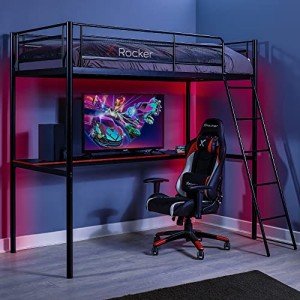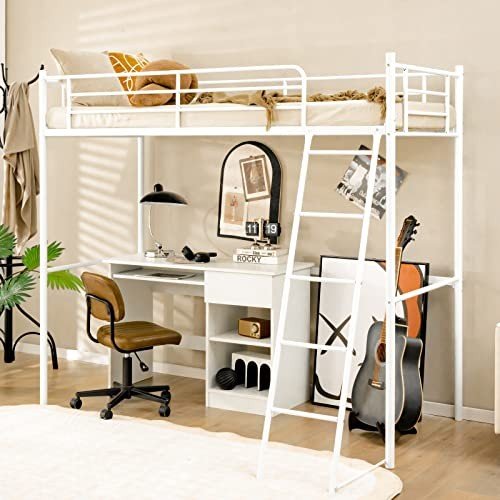The Bunk Beds Awards: The Most, Worst, And Weirdest Things We've …
페이지 정보
작성자 Roseanna 작성일25-08-31 05:09 조회1회 댓글0건본문

Exploring Bunk Beds: A Comprehensive Guide
Bunk beds have long been a staple in kids's bedrooms, dorms, and even homes with restricted space. Not just do they supply a useful sleeping service, however they likewise develop a fun and creative environment for children and a great space-saver for adults and households. This short article will explore everything you require to understand about bunk beds, from types and materials to safety suggestions and buying recommendations.
Tabulation
- Kinds Of Bunk Beds
- Traditional Bunk Beds
- Loft Beds
- Triple Bunk Beds
- L-Shaped Bunk Beds
- Material Options
- Wood
- Metal
- Security Considerations
- Buying Guide
- FAQs
Kinds Of Bunk Beds
Bunk beds can be found in different designs to suit different requirements and preferences. Here's a breakdown of the most typical types:
Conventional Bunk Beds
Traditional bunks normally include 2 beds stacked vertically on top of one another. These beds are ideal for brother or sisters sharing a space or for optimizing sleeping space in visitor spaces.
Loft Beds
Loft beds stand similarly to conventional bunk beds however do not have a lower sleeping area. Rather, they often integrate a desk or seating area below, making them a great choice for little spaces needing multifunctionality.
Triple Bunk Beds
Triple bunk beds are created for three residents, with beds stacked in a three-tier setup. These are less common however can be an enjoyable option for large households or slumber parties.
L-Shaped Bunk Beds
With one bed placed horizontally and the other vertically, L-shaped bunk beds are typically geared up with extra features such as desks or storage drawers and can complement corner areas in a space.
Comparison of Bunk Bed Types
| Bed Type | Perfect Use | Desc|x|ription |
|---|---|---|
| Standard | Shared bed rooms or visitor rooms | 2 beds stacked vertically |
| Loft | Little rooms requiring multi-purpose space | Upper bed with open space below |
| Triple | Large households or sleepovers | 3 beds stacked vertically |
| L-Shaped | Corner or flexible areas | A mix of vertical and horizontal beds |
Material Options
Bunk beds are made from different materials, with wood and metal being the most typical. Each material has its benefits and drawbacks.
Wood
- Toughness: Generally robust and can hold up against years of use.
- Aesthetic Appeal: Offers a timeless appearance that can mix with numerous decors.
- Weight Capacity: Typically stronger; can support heavier weights.
- Disadvantages: May be more costly than metal choices and can be vulnerable to scratches.
Metal
- Sturdiness: Generally lightweight and easy to move but still durable.
- Modern Design: Often is available in smooth designs, making it appealing for modern spaces.
- Cost-Effective: Usually less pricey than wood alternatives.
- Downsides: Can be cold to the touch in winters and might not have the exact same visual appeal for some purchasers.
Security Considerations
When it comes to bunk beds, safety can not be overlooked. Here are essential safety pointers to bear in mind:
- Guardrails: Ensure that the leading bunk bed for adults uk (lynellesplain.top) has guardrails on both sides to avoid falls.
- Tough Construction: Check for a solid develop and strong materials to stand up to weight and motion.
- Weight Limit: Adhere to the maker's weight limit for both the upper and lower bunks.
- Ladder Design: Choose bunks with a safe, easy-to-climb ladder and prevent any sharp edges or rungs.
- Age Restrictions: Most producers advise that children under the age of six should not oversleep the upper bunk.
Purchasing Guide
When shopping for bunk beds, think about the list below factors to discover the best suitable for your needs:
- Space Availability: Measure the space size and ceiling height, making sure there is appropriate space for the top bunk.
- Bed Size: Decide between twin, full, or bigger sizes based upon your needs and the size of the room.
- Style Preference: Consider the overall design of the bedroom to find a suitable design.
- Ease of Setup: Look for a bunk bed that is straightforward to assemble.
- Spending plan: Bunk beds are available in different rate ranges, so determine a budget plan before beginning your search.
Frequently asked questions
1. What is the advised age for kids to sleep on the leading bunk?
Kids aged 6 and older are typically advised to sleep on the top bunk to lessen the threat of falls.
2. How can I make my bunk bed more secure?
To boost security, make sure guardrails are properly installed and inspect that the bed is put on a flat surface. Additionally, motivate kids to use the ladder carefully.
3. Can I transform a bunk bed into 2 separate beds?
Lots of bunk beds are developed to be convertible. Check the maker's specs for convertibility features.
4. What devices are available for bunk beds?
Common accessories consist of beddings, storage drawers, staircases rather of ladders, and tented canopies for a fun visual appeal.

5. How do I maintain my bunk bed?
Routine checks for loose screws or structural integrity can assist guarantee safety. Dust the bed routinely and clean spills quickly to keep the products in good condition.
Bunk beds are flexible and a space-efficient option for numerous living situations, from children's rooms to visitor accommodations. With many styles and materials available, prospective buyers have a wealth of alternatives to consider, guaranteeing a combination of usefulness and aesthetics. By prioritizing security and following the pointers detailed in this guide, people can find the ideal bunk bed that suits their space and way of life, all while producing an enjoyable sleeping environment.
댓글목록
등록된 댓글이 없습니다.

